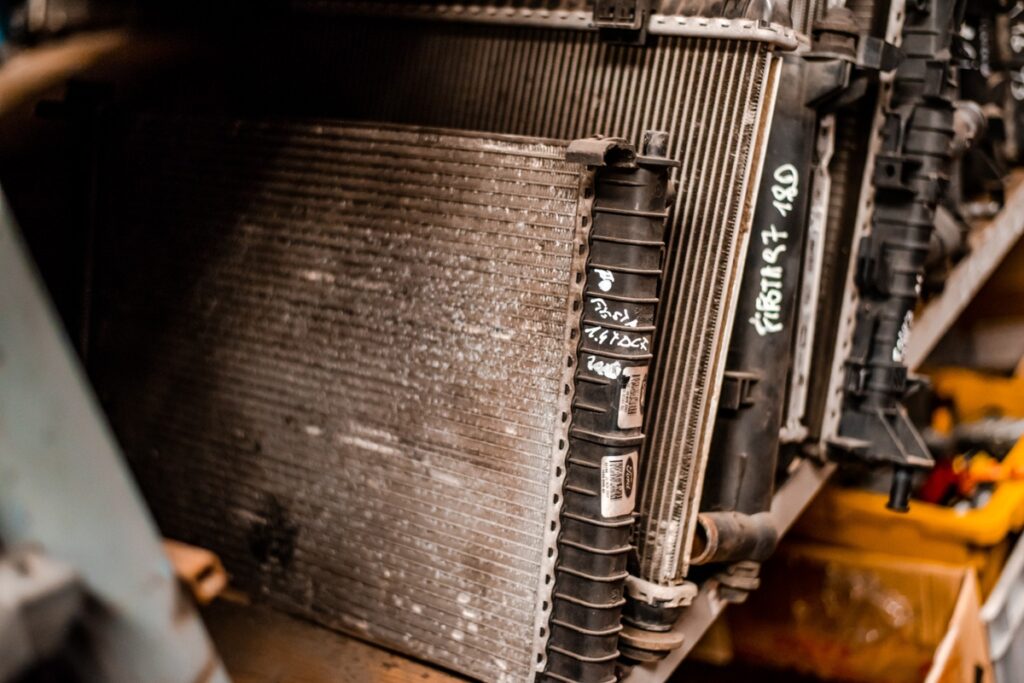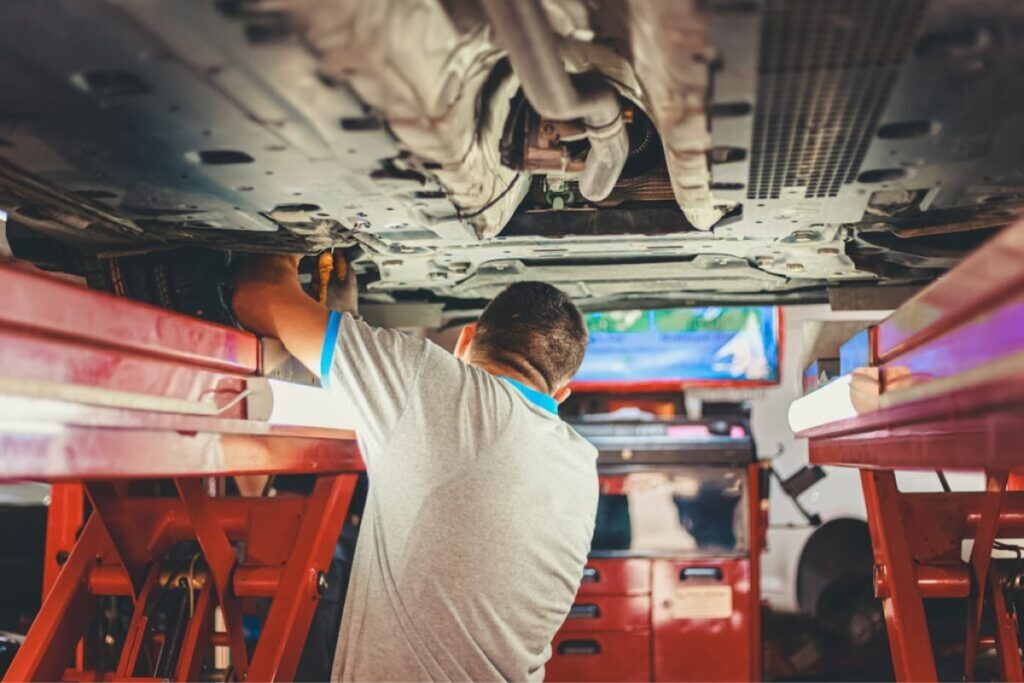Protecting your car from wear and tear depends on you (and on routine care). So there’s nothing better than knowing how to prevent that on car parts — while saving your wallet.
The car radiator is no exception. Learn more about this front grille‘s component, how it works, the types of radiators, and the 6 tips to protect and maintain your car’s radiator.

What’s a car radiator, and how it works
The car radiator is one of the components responsible for the engine‘s cooling system. This is the component that controls the temperature, whose function is to dissipate the excess heat generated while working.
The excess heat is extracted by a tube connected to plates that dissipate it.
If the car radiator doesn’t perform its function and allows heat to build up, the engine can end up damaged.
How does a radiator work
The car’s radiator cooling system’s center, where heat exchange happens.
Coolant (also known as “antifreeze“) runs through the engine to reach a high temperature; it then goes to the radiator, which expels the heat through the dissipation plates.
Back in the engine, the coolant returns to a lower temperature.
Then, air enters through the car radiator, lowering the liquid’s temperature. When the thermostat reaches high temperatures, the fluid circulates throughout the system, reducing the temperature.
Types of car radiators
Yes, there’s more than one radiator you should know about.
- Cooling Radiator: used in cars to keep the engine from overheating;
- Oil Radiator: used to cool the lubricating oil. It’s similar to the cooling system, but the difference is in the type of liquid used — instead of coolant, it uses a specific oil;
- Climate Control Radiator: used to control the temperature inside the car. Thus, you can have the cabin warmer on cold days and cooler on hot days.
What if the radiator fails?
This question has probably crossed your mind — right?
If the car radiator fails, the engine may overheat, leading to severe problems.
The radiator can fail for 2 reasons: the thermostat fails or the coolant line breaks. Either way, it becomes impossible to lower the temperature.
Therefore, it’s best to be attentive to possible failure signs.
If the fan runs continuously every time you turn off the car, it’s a sign that the engine’s overheating and the cooling system isn’t sufficient to cool the engine. This situation can undoubtedly indicate a radiator failure.
Avoid moments like this and protect your car’s radiator.

How to maintain the car radiator: 6 helpful tips
It’s time to learn more about proper car radiator care:
- Use a coolant instead of water. This will prevent rust, corrosion, and damaged pipes;
- Use a liquid recommended by your vehicle’s manufacturer. Avoid comparing prices or choosing the cheapest option on the market. It’s vital to use the product your brand recommends;
- Make preventive check-ups frequently to avoid anomalies, such as a clogged radiator;
- Replace, or add coolant when the car is at a normal temperature. If you do this when the car’s still warm, you’re likely to damage the engine;
- Be aware of possible anomalies in the radiator. If you notice any, reach out to your mechanic;
- Whenever you drive on dirt or dusty roads, use a brush to clean the radiator fins. This small gesture prevents the accumulation of debris and dirt, which controls air intake obstructions.
Contact your mechanic if you detect any anomaly in the car radiator or other components. Compromising your vehicle’s health is a small gesture leading to a big consequence. Prevent and protect your car with these helpful care tips.

